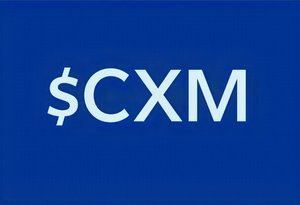

When Should You Sell Your ASX Shares? 3 Expert Tips to Help You Decide
Selling ASX shares can be just as tricky as deciding when to buy them. While holding onto a winner or waiting for a rebound might feel like the safest move, it could sometimes work against you. So, how do you know it’s time to hit the sell button? Let’s dive into three expert-backed strategies to make smarter selling decisions.
1. When Your Original Investment Goal Is Achieved
One of the clearest signals to sell is when your investment thesis—the reason you bought the stock in the first place—has played out.
Joshua Derrington, Chief Investment Officer of Alvia Asset Partners, explains this concept with a practical example. He cites Novo Nordisk, a standout performer in 2023. As the company’s growth expectations were met and valuations soared beyond reasonable levels, the upside potential had diminished. At that point Derrington exited his position, locking in significant gains.
The takeaway? When a company has achieved what you expected, holding on for further gains could be riskier than selling and reaping the benefits. Always ask yourself whether the future growth potential still justifies keeping the stock in your portfolio.
2. When the Risk-Reward Ratio No Longer Makes Sense
Another reason to consider selling is when the balance between risk and reward shifts against you.
For instance, Derrington mentions South32 Ltd. (ASX: S32). By early 2022, the company had delivered impressive results, but most near-term growth catalysts were already reflected in its stock price. Recognising this, the fund manager sold the position, avoiding potential downside risks. Indeed, since the sale, South32’s stock price has struggled to gain momentum.
The key lesson here is to evaluate whether the potential rewards still outweigh the risks. If not, it might be time to let go of the stock.
3. When You Made a Mistake in the First Place
Nobody bats 100% in investing, not even legendary figures like Warren Buffett. Admitting an investment mistake is hard, but it’s often the best move.
If your initial reasoning for buying stock turns out to be flawed, clinging to it in the hope of a turnaround could lead to even bigger losses. According to Derrington, the “fear of missing out” (FOMO) often tempts investors to stick with underperforming stocks, hoping for a miraculous recovery.
Instead, he recommends asking yourself a simple question: “If I didn’t already own this stock, would I buy it today?” If the answer is no, it’s time to sell.
On the flip side, FOMO can also cause investors to ride high-performing stocks for too long. A smart approach here is to periodically take partial profits. This allows you to lock in gains while still maintaining some exposure to future upside.
What to Avoid When Selling
Selling shares can be challenging, but some mistakes are more common than others. Avoiding these traps is just as crucial as knowing when to sell.
- Panic Selling in a Downturn: According to broker Morgan Stanley, panic selling during market downturns can lock in losses permanently. Instead, adopt a long-term perspective—markets are cyclical, and downturns are often temporary.
- Anchoring to Past Performance: Investors often overestimate their ability to judge a stock’s future performance based on its past. But as the saying goes, “Past performance is no guarantee of future results.”
- Overtrading: Short-term trading might seem appealing, but it’s much harder to profit from than it looks. Avoid making impulsive sell decisions based on minor market fluctuations.
Smarter Decisions, Stronger Portfolios
Selling ASX shares doesn’t have to be a guessing game. By following these three tips—selling when your investment goal is achieved, when the risk-reward ratio no longer works, or when you’ve made a mistake—you can make more informed and confident decisions.
At the same time, steer clear of panic-driven moves and unrealistic expectations. If navigating the ups and downs of individual stocks feels overwhelming, consider investing in an exchange-traded fund (ETF). ETFs track indices like the S&P/ASX 200, offering diversified exposure with fewer buy-and-sell decisions to worry about.
In the end, the key to success is a clear process, a calm mindset, and a willingness to adapt as circumstances change. Your portfolio—and your peace of mind—will thank you.

Can BNPL Shares Continue Their Stellar Growth in 2025?
The Buy Now, Pay Later (BNPL) sector, once viewed with scepticism due to its reliance on debt-heavy models, has recently seen a resurgence that’s catching the attention of investors. Stocks like Zip Co Ltd. (ASX: ZIP) and Block Inc. (ASX: SQ2) have delivered impressive returns in the past year, defying earlier concerns about the sustainability of the industry. Let’s dive into what’s fuelling their growth and whether they could continue to outperform in 2025.
Zip Co’s Spectacular Turnaround
Zip shares skyrocketed an astounding 363% in 2024, cementing their position as the top-performing stock on the ASX 200. To put this into perspective, a $10,000 investment at the end of 2023 would have grown to $46,000 within a year. Such gains are rare in the stock market, making Zip’s performance a standout story.
But what caused this meteoric rise? In early 2023, the BNPL industry was struggling. Competitors like OpenPay entered liquidation, and giants like Block Inc. saw their market caps shrink, casting doubts over the future of BNPL providers. Despite these challenges, Zip proved the sceptics wrong.
The company reported stellar results for FY 2024:
- Revenue surged by 28.2% to $868 million.
- Cash earnings before tax, depreciation, and amortisation (EBTDA) jumped by 243.2%, reaching $69 million.
- Total transaction volume (TTV) rose 14% to $10.1 billion.
- Notably, net bad debts decreased, accounting for just 1.7% of TTV—an impressive feat given the economic pressures of rising interest rates.
Zip’s CEO, Cynthia Scott, credited this success to the company’s focus on strategic priorities and its profitable operations in the U.S. and Australia. Analysts, such as those at UBS, remain optimistic about Zip’s future, forecasting an additional 20% upside in its share price.
Block Inc: Riding the BNPL Momentum
Another BNPL heavyweight, Block Inc. (ASX: SQ2), has also impressed investors. Block shares climbed 39% in 2024, significantly outpacing the S&P/ASX 200 Index’s 10% gain. Its acquisition of Afterpay in 2022 has been a cornerstone of its growth, positioning Block as a leader in the sector.
While the broader BNPL industry faced immense pressure due to rising interest rates, Block weathered the storm and is now thriving. Jed Richards of Shaw and Partners attributes this resilience to Block’s ability to adapt its business model and integrate Afterpay seamlessly.
Key highlights for Block in 2023 include:
- Revenue growth of 25%, totalling US$21.92 billion.
- Its subsidiary, Square, processed an impressive US$228 billion in payments.
As interest rates start to decline in major markets like the U.S. and Australia, Richards predicts that Block and other surviving BNPL players will benefit significantly. Consumers, particularly in the U.S., are increasingly embracing BNPL transactions, providing a favourable tailwind for further growth.
What’s Driving the BNPL Resurgence?
Improved Profitability
Both Zip and Block have demonstrated that BNPL can be profitable, even in challenging economic conditions. Their focus on reducing bad debts, expanding margins, and achieving operational efficiencies has set them apart.
Evolving Consumer Behavior
Despite initial scepticism, BNPL has become a preferred payment method for many consumers. The convenience and flexibility it offers have made it especially popular among younger demographics.
Favorable Interest Rate Environment
With interest rates peaking in several countries and expected to decline, the cost of funding for BNPL providers is likely to decrease. This could further boost profitability and investor confidence.
Consolidation in the Industry
The shakeout of weaker players, such as Openpay, has left fewer competitors in the BNPL space. This consolidation allows market leaders like Zip and Block to capture a larger share of the growing demand.
What’s Next for BNPL Stocks?
As we look ahead to 2025, the outlook for BNPL stocks remains optimistic. Analysts are betting on further growth for companies like Zip and Block, driven by their strong financial performance and the broader adoption of BNPL services. However, investors should keep an eye on potential risks, including regulatory changes and evolving competition from traditional financial institutions.
For now, it seems the survivors of the BNPL industry’s earlier challenges are well-positioned to thrive in the coming years. Will Zip and Block continue to deliver market-beating returns? Only time will tell, but the signs certainly look promising.

Who Holds the Wealth in Australia? A Generational Breakdown
Ever wondered which generation holds the most wealth in Australia and why? The latest insights into asset distribution from KPMG reveal fascinating trends about property ownership, investments, and financial habits across Baby Boomers, Gen X, Millennials, and Gen Z. Let’s dive into the numbers and uncover the generational divide.
The Generational Wealth Race: Who’s on Top?
Baby Boomers (born 1946–1964) remain the wealthiest generation with an average net worth of $2.31 million. Close behind are Gen X (1965–1980) at $1.88 million, followed by Millennials (1981–1996) at $757,000, and Gen Z (1997–2012) with $96,000.
While these figures may not be surprising—given older generations have had more time to build wealth—the disparity between generations highlights significant economic challenges faced by younger Australians.
Housing Wealth: Gen X Takes the Lead
Housing dominates the wealth of all generations, but Gen X has overtaken Baby Boomers in this category. The average housing wealth for Gen X stands at $1.31 million, slightly edging out Boomers at $1.30 million. Millennials lag behind with $750,000, and Gen Z has only $69,000 in housing wealth.
Baby Boomers, who historically held the largest share of property wealth, are beginning to sell their portfolios as they transition into retirement. This has led to a phenomenon known as the "great wealth transfer," where Baby Boomers pass on assets to their Gen X and Millennial children. However, homeownership remains a distant dream for many Millennials and Gen Z, who struggle to overcome skyrocketing property prices.
Investments: A Generational Shift
When it comes to shares, Gen X again leads the pack, with an average shareholding of $256,000. Baby Boomers follow at $206,000, while Millennials and Gen Z hold far less, averaging $51,000 and $7,000, respectively.
Why the stark difference? Younger generations face financial pressures such as student loans and higher living costs, leaving them with less disposable income to invest. Additionally, Millennials and Gen Z exhibit a more cautious attitude towards equities, likely influenced by economic volatility in recent years.
The Role of Superannuation
Superannuation and business assets are another critical part of the wealth equation. Baby Boomers and Gen X hold comparable amounts, averaging $641,000 and $586,000, respectively. Millennials and Gen Z, being newer to the workforce, have far less in super and business assets, at $260,000 and $43,000.
The good news for younger Australians is that superannuation balances are growing faster than ever, thanks to the power of compounding. Over time, Millennials and Gen Z are expected to accumulate more wealth in this asset class compared to their parents.
Debt: A Tale of Two Generations
Debt levels reveal a striking difference between older and younger Australians. Gen X carries the highest average loan balance at $448,000, followed by Millennials at $410,000. These debts are predominantly tied to home loans, reflecting the rising cost of property.
In contrast, Baby Boomers, nearing or already in retirement, have reduced their liabilities, with an average loan balance of just $82,000. Gen Z, still early in their financial journey, carries the smallest debt burden at $49,000, mainly due to HECS and credit card debt.
What’s the Future of Wealth?
The wealth landscape in Australia is undoubtedly shifting. While Baby Boomers still hold the lion’s share of assets, Gen X is closing the gap with significant holdings in housing and shares. Meanwhile, Millennials and Gen Z face economic hurdles but have the potential to leverage superannuation growth and time to build wealth.
As the "great wealth transfer" continues and younger generations adapt to financial challenges, the balance of wealth may look very different in the years to come. For now, each generation’s financial journey tells a unique story shaped by the economic conditions of their time.
ASX 200

Jan 15, 2025 • by

Jan 15, 2025 • by

Jan 15, 2025 • by

Jan 15, 2025 • by

Jan 15, 2025 • by

Dec 16, 2024 • by

Dec 16, 2024 • by

Dec 16, 2024 • by

Dec 16, 2024 • by

Dec 16, 2024 • by

Sep 23, 2024

Jan 2, 2025

Jan 7, 2025

Jan 14, 2025

Jan 8, 2025

Jan 17, 2025

Jan 6, 2025

Jan 21, 2025

Jan 10, 2025

Jan 9, 2025

Jan 7, 2025

Jan 6, 2025










Sectors
HealthcareMaterialsConsumer StaplesUtilitiesEnergyIndustrialsFinancialsInformation TechnologyConsumer DiscretionaryCommunication ServicesReal EstateSupport
Contact SupportSupport
Contact Support© 2024 Stock Piper. All rights reserved